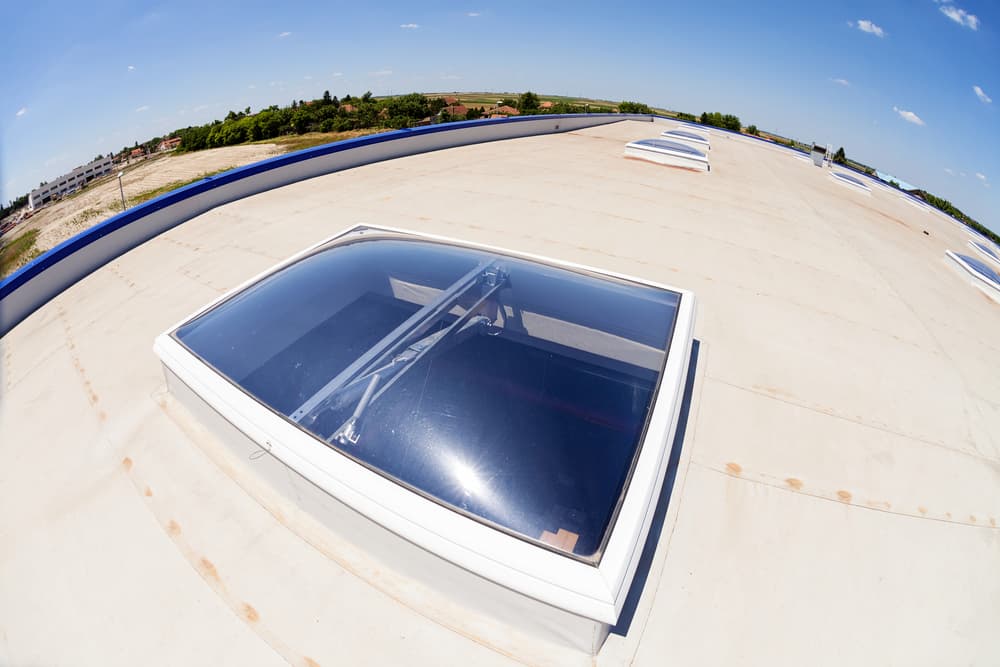Roofing options for commercial buildings vary in structure and design, but one of the most popular choices is flat roof construction. Flat roofing installation comes with the advantage of maximizing the square footage of your building’s exterior space and special challenges. A roofing company experienced with commercial flat roofing knows how to overcome these challenges and provide a high-quality, functional product that lasts for years.
Commercial Flat Roofing Solutions
When considering installing a flat roof onto a property, some business owners express concerns about water drainage or UV protection. Modern materials and installation methods used for commercial flat roofs are durable and designed to mitigate water drainage problems. These materials are resistant to UV rays and other issues that can arise from constant exposure to the elements. Whether you are installing a new roofing system or repairing an existing problem, your roofing company walks you through your options to help you make an informed decision.
Commercial Flat Roofing Options
When a professional installs new flat roofing, there are several types of materials and installation methods. Each type comes with its own advantages, so learning more about the product can help you decide which one works best for your building.
Asphalt-Based Roofing
An asphalt-based roofing material, such as modified bitumen, can protect the roof of your building from weather events because it has a waterproof quality. An additional advantage to this type of material is the increase in the energy efficiency of a building with a modified bitumen roof covering. To give the roof some fire resistance, heat can be applied to make sure the roof material fully adheres to the surface of the substrate.
Foam-Based Roofing
If you choose a spray polyurethane foam for your roof material, the installation takes place in multiple steps. The foam itself is first sprayed onto the roof to serve as insulation. After the foaming step is complete, a sealant is used as a topcoat. The topcoat protects the roof from weather fluctuations, such as extreme temperature swings and rain.
Rubber Roofing
Rubber roof material such as ethylene propylene diene terpolymer is a popular choice due to how easy it is to repair if something becomes damaged in the future. EPDM systems are also a good choice if your roof has had problems with standing water in the past since rubber roofing discourages water ponding.
Sheet Roof System
Another popular option for commercial roofing is using sheets of thermoplastic polyolefin that are either screwed down or otherwise adhered to the roof substrate. TPO sheets are a common roof cover because they are resistant to UV rays, weather changes, and puncture damage.
PVC Roof
Like many products on the market, commercial roofing membranes can also be constructed out of PVC. A PVC roof will withstand heat, precipitation, and puncture damage due to the material’s flexibility.
Multi-Layer Roof System
Also called a built-up system, a multi-layer roof involves alternating layers of bitumen and roofing felt between the substrate and the top of the roof. The layers of a BUR system provide additional resistance against the elements and more insulation than other methods.
Get Started With Hermitage Roofing Company
New flat roof installation or commercial flat roof repairs can prevent roof pooling and leaks, reduce UV damage, increase energy efficiency, and reduce the chance of future damage. Virginia-based Hermitage Roofing Company can assist you with any of your roofing needs, so contact the team today to set up a consultation or learn more about the service options.
Call us for more information!
Featured Image: Vladimir Nenezic/Shutterstock


